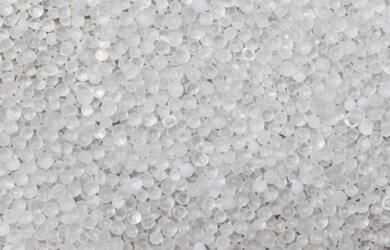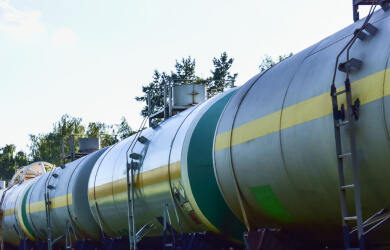The selection and volume of base oils directly influence a lubricant’s functional attributes. Characteristics including how it reacts to temperature changes (viscosity-temperature relationship), its ability to resist oxidation, and its friction management capabilities are markedly affected.
- Viscosity: This fundamental property gauges the oil’s resistance to flow. A crucial factor in determining how the oil performs under different operating conditions.
- Viscosity Index: A critical measure that reveals the extent to which the oil’s viscosity is affected by temperature variations. Higher viscosity index values signify better performance across a range of temperatures.
- Sulphur Content: An important parameter influencing both the lubricating efficiency and the environmental footprint of the oil. Lower sulphur content is generally preferred for reduced environmental impact.
- Flash Point: This is the specific temperature at which the oil begins to emit flammable vapors. It’s a vital safety parameter, indicating the oil’s volatility and combustion risk.
- Pour Point: Refers to the lowest temperature at which the oil maintains its fluidity. Essential for ensuring reliable performance in cold environments.
- Colour: While often overlooked, the colour of base oil can be an indicator of its purity and suitability for certain applications. Different oil types exhibit distinct colors, influencing their selection for specific uses. Usually, the clearer the colour – the better quality.
Base Oils Classification: Base oils are broadly classified into five groups based on their composition and performance characteristics. Legion Oil & Gas LLC specializes in the following:
- Less than 90% saturates.
- More than 0.03% sulfur.
- Viscosity-index range of 80-110.
- Suitable for a temperature range of 0-65°C.
- Solvent-refined, making them the most economical choice.
- Over 90% saturates.
- Less than 0.03% sulfur.
- Viscosity index of 100-120.
- Hydrocracked manufacturing process.
- Better antioxidation properties and clearer color.
- Greater than 90% saturates.
- Less than 0.03% sulfur.
- Viscosity index above 120.
- Severely hydrocracked for purity.
- Often described as synthesized hydrocarbons.
- Synthesized base oils.
- Broad temperature range, ideal for extreme conditions.
- Commonly used in high heat applications and cold environments.
- Includes silicone, phosphate ester, polyalkylene glycol (PAG), and more.
- Often mixed to enhance oil properties.
- Esters are prevalent, known for high-temperature tolerance and detergency.
Mineral base oils can divide into paraffinic and naphthenic, depending on crude oil and content of these types of molecules.
Legion Oil & Gas LLC: Your Trusted Partner
At Legion Oil & Gas LLC, we are committed to providing high-quality base oils and lubricants that cater to a wide range of industrial needs. Understanding the critical role of base oils, we ensure our products meet the highest standards of quality and performance.
This structured and informative approach provides a comprehensive understanding of base oils, their classifications, and applications, positioning Legion Oil & Gas LLC as a knowledgeable and reliable partner in the industry.
Legion Oil & Gas LLC has unique expertise and 10 years of experience in base oils, which allows us to offer our clients the best quality
Our extensive Base Oil portfolio
spans over 40 countries worldwide, reaching regions such as Latin America (including Argentina, Colombia, and Ecuador), the USA, Asia and the Middle East (Turkey, China, the UAE, Indonesia, Thailand), South Africa, and Europe (with countries like Poland, Spain, Italy, Portugal, Greece, and more).Our technical knowledge makes it possible to treat each case individually and offer our customers the best, most cost-effective solution for various finished lube applications.
FAQ about Base Oils and lubricants
Base oils for lubricants are the primary raw materials used to produce lubricating oils, which play a critical role in reducing friction, wear, and heat in mechanical systems. They make up 70-99% of a finished lubricant and are blended with additives to achieve the desired properties for specific applications, such as automotive engines, industrial machinery, or hydraulic systems.
Base oils are derived from refining crude oil or through synthetic processes, which determine their quality and performance characteristics. They are categorized into five API groups (I-V) based on their composition and refining method. Group I-III base oils are mineral-based, while Group IV and V include synthetic base oils such as Polyalphaolefins (PAOs) and esters.
As a key supplier Legion Oil & Gas LLC provides a variety of products, ranging from Group I base oils to synthetic base oils, catering to industries requiring specific performance attributes for automotive and industrial applications.
The classification of base oil is determined by the American Petroleum Institute (API) and divided into five groups:
- Group I: Solvent-refined mineral oils.
- Group II: Hydrocracked mineral oils with higher purity.
- Group III: Hydrocracked oils with even higher purity and performance.
- Group IV: Synthetic base oils, such as Polyalphaolefins (PAOs).
- Group V: Non-standard oils like esters and other synthetic types.
Base oils are categorized into five distinct groups by the American Petroleum Institute (API), each with unique properties and production methods. These groups help define the performance characteristics of lubricants, such as viscosity, thermal stability, and resistance to oxidation. The classification of base oils is based on key factors like viscosity index (VI), sulfur content, and saturates (the proportion of stable, saturated hydrocarbons in the oil).
The table below provides a detailed comparison of the properties of each base oil group, highlighting their sources, production methods, and typical applications. Understanding these differences is crucial for selecting the appropriate base oil for specific lubricant formulations and operating conditions.
Differences in properties of the five groups of base oils:
Base Oil Group Source Production Method Viscosity Index (VI) Saturates (%) Sulfur Content (%) Applications Group I Mineral (Crude Oil) Solvent refining 80–120 < 90 > 0.03 General-purpose lubricants, industrial oils, and greases. Group II Mineral (Crude Oil) Hydrocracking 90–120 > 90 < 0.03 Hydrocracking Group III Mineral (Crude Oil) Severe hydrocracking > 120 > 90 < 0.03 High-performance lubricants, synthetic blends, engine oils. Group IV Synthetic (Polyalphaolefins) Chemical synthesis (PAOs) > 125 100 0 High-temperature and extreme-condition applications. Group V Synthetic or natural (Esters) Chemical synthesis or others Varies Varies Varies Specialty applications, such as compressor oils and greases. The most in-demand base oils are Group II, Group III, and re-refined base oils. Each type meets specific performance and environmental requirements, making them highly desirable in today’s markets:
- Group II Base Oils: Group II oils are widely used due to their high purity, excellent oxidation stability, and low sulfur content. They provide better performance than Group I oils and are cost-effective for use in automotive engine oils, industrial lubricants, and hydraulic fluids.
- Group III Base Oils: Group III oils, often referred to as “synthetic” in marketing, offer superior thermal stability, high viscosity index (VI), and excellent performance in extreme temperatures. These properties make them ideal for high-performance automotive lubricants, synthetic blends, and industrial applications.They are in high demand for applications requiring top-tier performance, especially in modern vehicles with advanced engine technologies.
- Re-refined Base Oils: Re-refined base oils are gaining significant traction due to their environmental benefits and competitive performance. Derived from used oils through advanced refining processes, they meet or exceed the quality of virgin Group I and Group II oils. Their production reduces waste, conserves resources, and aligns with sustainability goals.
Many industries are turning to re-refined oils as a sustainable alternative, driven by environmental regulations and corporate social responsibility initiatives.
Group II and Group III base oils dominate the market due to their performance, regulatory compliance, and cost-effectiveness, while re-refined base oils are rapidly becoming a favored choice for their eco-friendly attributes and comparable quality. Together, these base oils meet the needs of diverse industries while supporting sustainable practices.
Base oils from Legion Oil & Gas LLC are mainly sourced from the European Union and Central Asia.
Legion Oil & Gas LLC has established itself as a key player in the procurement and global distribution of base oils. Our reach spans continents, delivering bright stock to markets in Europe, Latin America, Africa, Asia, including destinations such as Argentina, Brazil, Colombia, Turkey, Vietnam, China, among others.
Base oils serve as the foundation for a wide variety of products, primarily in the lubrication and industrial sectors. Below is a list of key products that can be produced from base oils:
- Automotive Products engine oils, gear oils: automatic transmission Fluids.
- Industrial Lubricants: hydraulic oils, compressor oils, turbine oils, machine oils.
- Specialty Oils: transformer oils; refrigeration oils, metalworking fluids.
- Greases: multi-purpose greases; high-temperature greases.
Base oil viscosity refers to the measure of a base oil’s resistance to flow. It is one of the most critical properties determining the performance and application of lubricants made from base oils. Viscosity affects how well a lubricant forms a film to separate moving parts and how it flows under different temperatures and operating conditions.
This strategic approach enables Legion Oil & Gas LLC to offer flexible supply volumes, ranging from small batches to large-scale shipments, tailored to meet the specific needs of their clients. By maintaining strong relationships with various refineries and optimizing logistics, Legion Oil & Gas LLC ensures a reliable and scalable supply of base oils to accommodate diverse customer demands.
Legion Oil & Gas LLC has strategically expanded its operations within Northwest Europe’s largest refining hub by establishing two warehouses near the Port of Rotterdam. The strategic location of these warehouses enables Legion Oil & Gas LLC to effectively manage shipments via multiple transport modes.By leveraging these logistics centers, Legion Oil & Gas LLC enhances its capacity to provide seamless and efficient supply chain solutions for its clients across various industries.
Fill the form to make a request














